Pallet Planters: The Ultimate DIY for Garden and Indoor Elegance
Wood pallets have long been a staple of shipping and industrial operations, but in recent years they have emerged as one of the most exciting materials for do-it-yourself projects—especially when it comes to planters. When repurposed, these sturdy, weathered wooden structures can be transformed into beautiful, unique pieces of garden and indoor decor that not only capture a rustic charm but also contribute to a sustainable lifestyle. In this blog post, we will explore the multifaceted world of wood pallet planters and how they can be used to create the ultimate garden oasis and stylish indoor accents. We’ll dive deep into their history, the environmental benefits of reusing materials, detailed design ideas, step-by-step construction tips, and creative ways to incorporate these planters into both outdoor and indoor settings. Whether you are a seasoned DIY enthusiast or someone looking to add a touch of character to your living space, the possibilities with wood pallet planters are endless and inspiring.
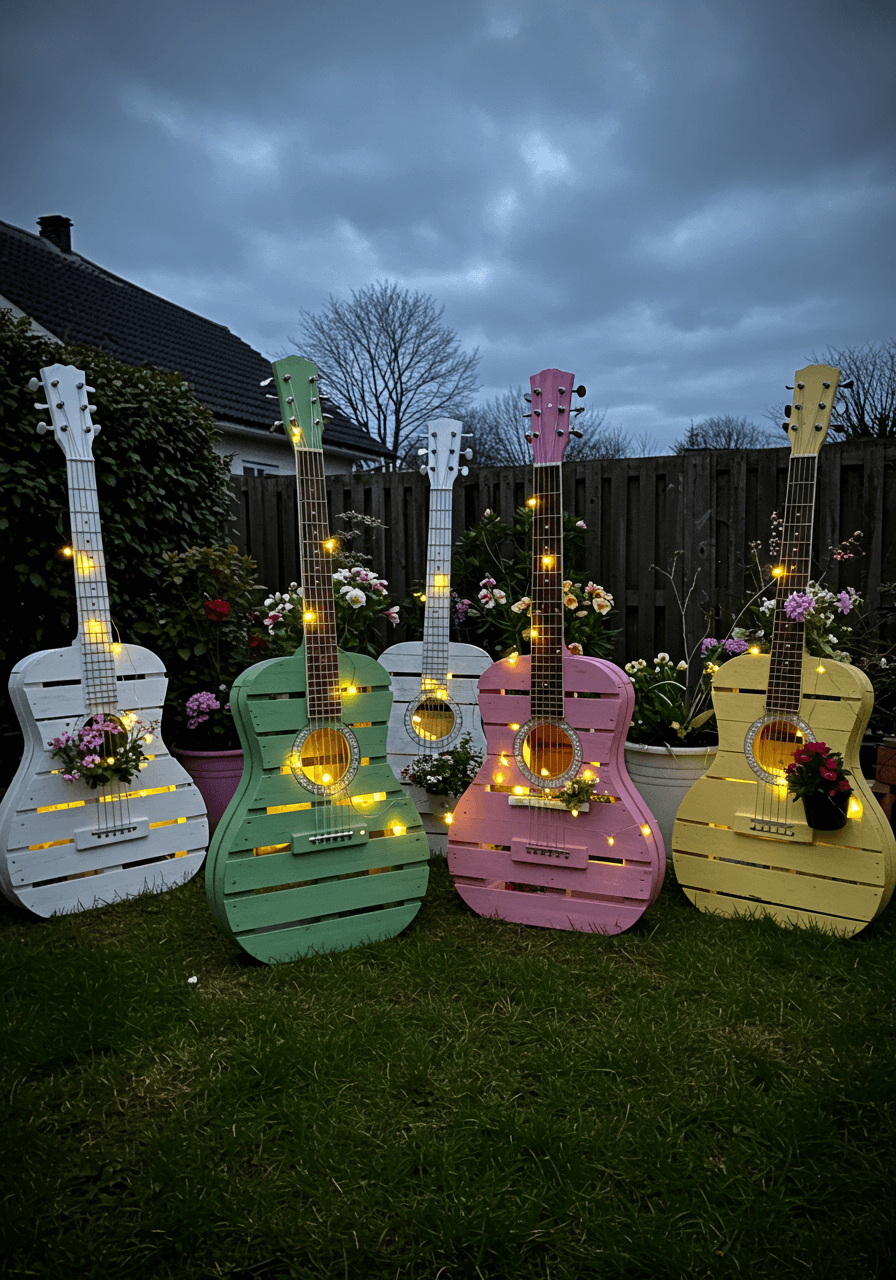
There is something inherently attractive about wood that has a story to tell. Wood pallets, with their natural grain and weathered texture, carry with them the patina of years of use. This unique character lends itself perfectly to creating planters that add warmth and personality to any space. The rustic appeal of reclaimed wood brings an organic and natural element into modern design, making wood pallet planters a standout addition to gardens, patios, balconies, and even indoor spaces like living rooms and entryways. These planters not only serve as a functional way to grow plants but also act as statement pieces that enhance the aesthetic of your decor.
One of the most significant advantages of using wood pallets for planters is their environmental benefit. In a world where sustainability is more than just a buzzword, repurposing used materials helps reduce waste and lowers the demand for new resources. Every time a pallet is transformed into a planter, it prevents a piece of wood from ending up in a landfill. This commitment to recycling and sustainable design is not only environmentally friendly but also sends a powerful message about the importance of resourcefulness and conscious consumption. For those who care about the impact of their choices, wood pallet planters represent a tangible step toward a greener future.
Beyond sustainability, the cost-effectiveness of wood pallets is a major draw. Pallets are often available for free or at very low costs from local businesses, warehouses, or recycling centers. This affordability means that you can embark on large-scale projects without breaking the bank. Instead of investing heavily in expensive materials, you can find high-quality pallets and transform them into planters that are both stylish and durable. This makes wood pallet planters an attractive option for DIYers who want to experiment with design without a large financial commitment. With a little creativity and elbow grease, these humble pallets can be reimagined into luxurious garden features or chic indoor decor accents that rival their store-bought counterparts.
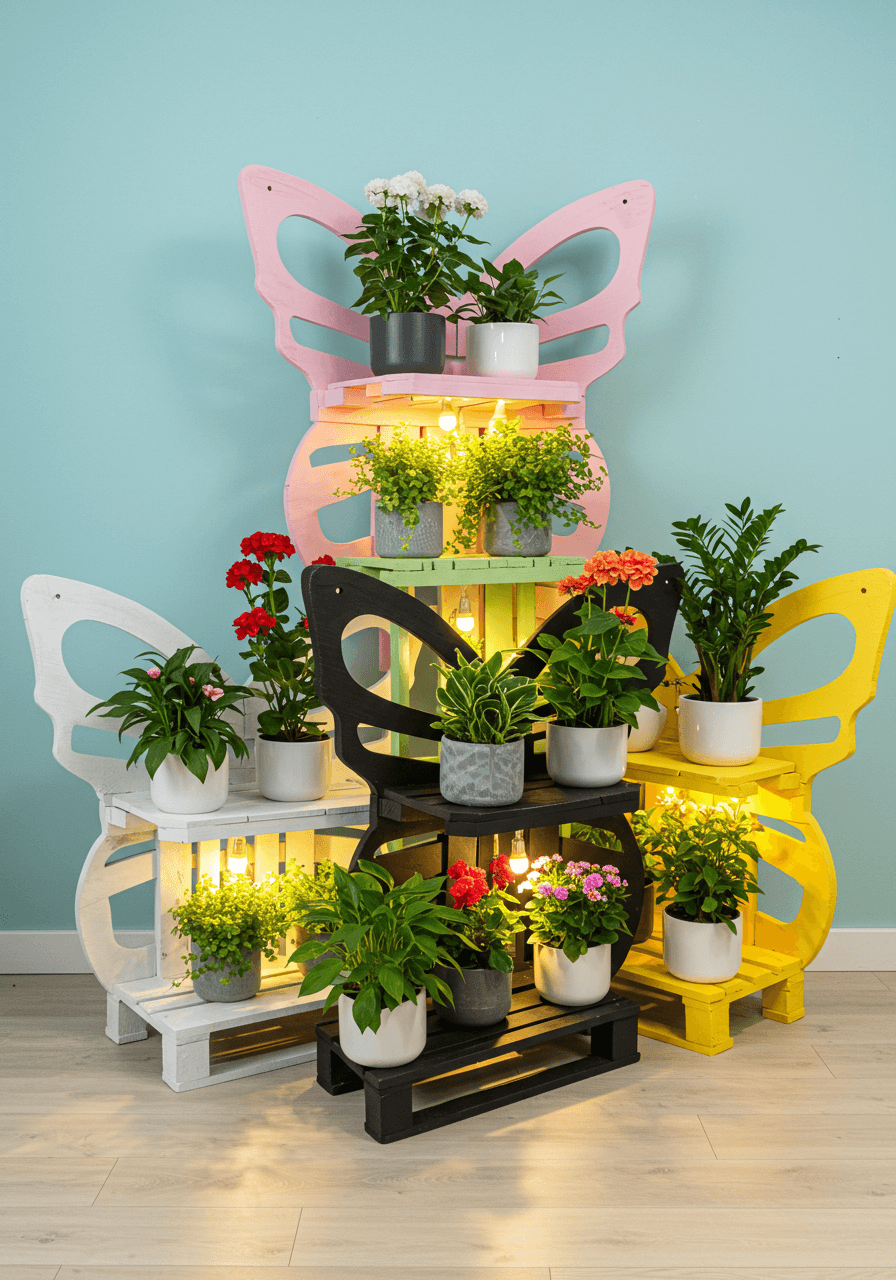
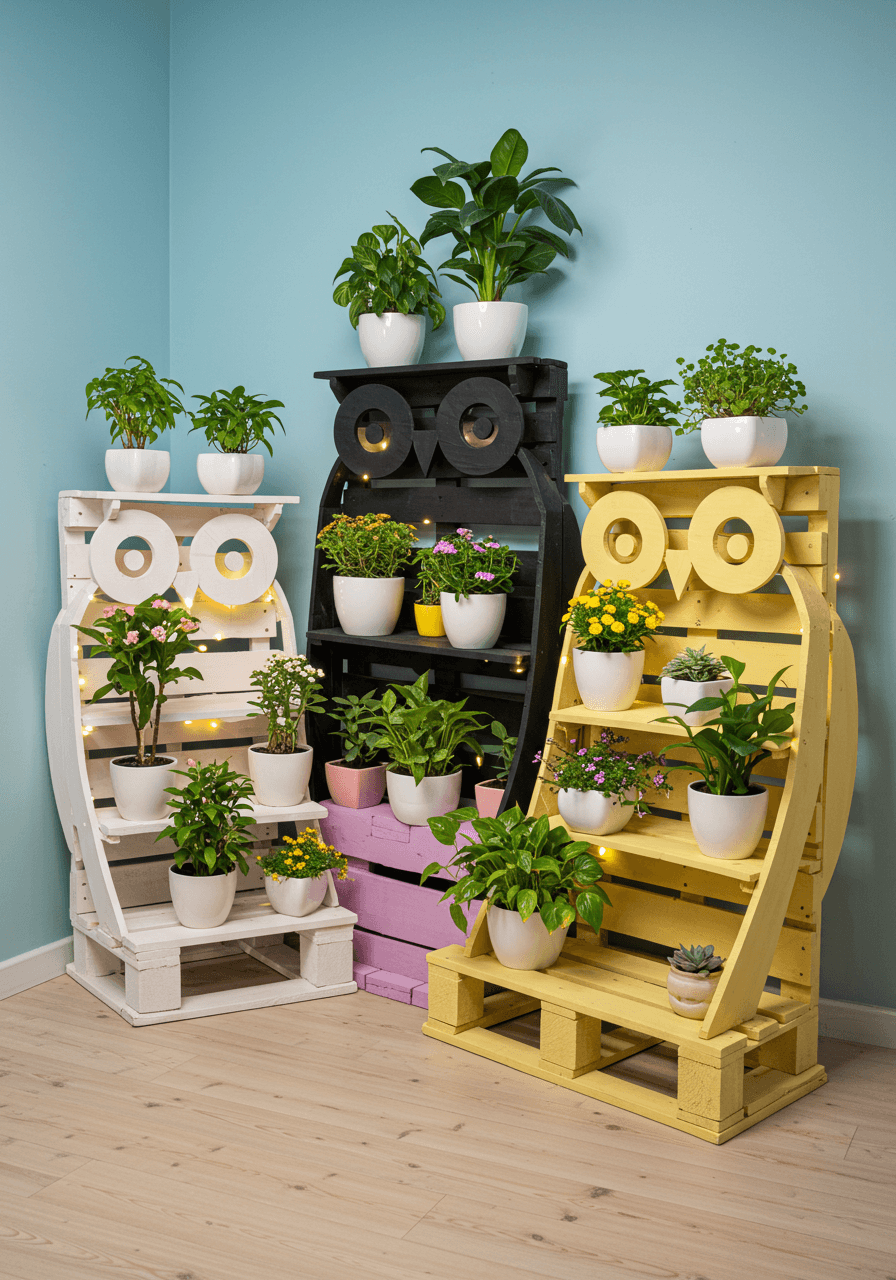
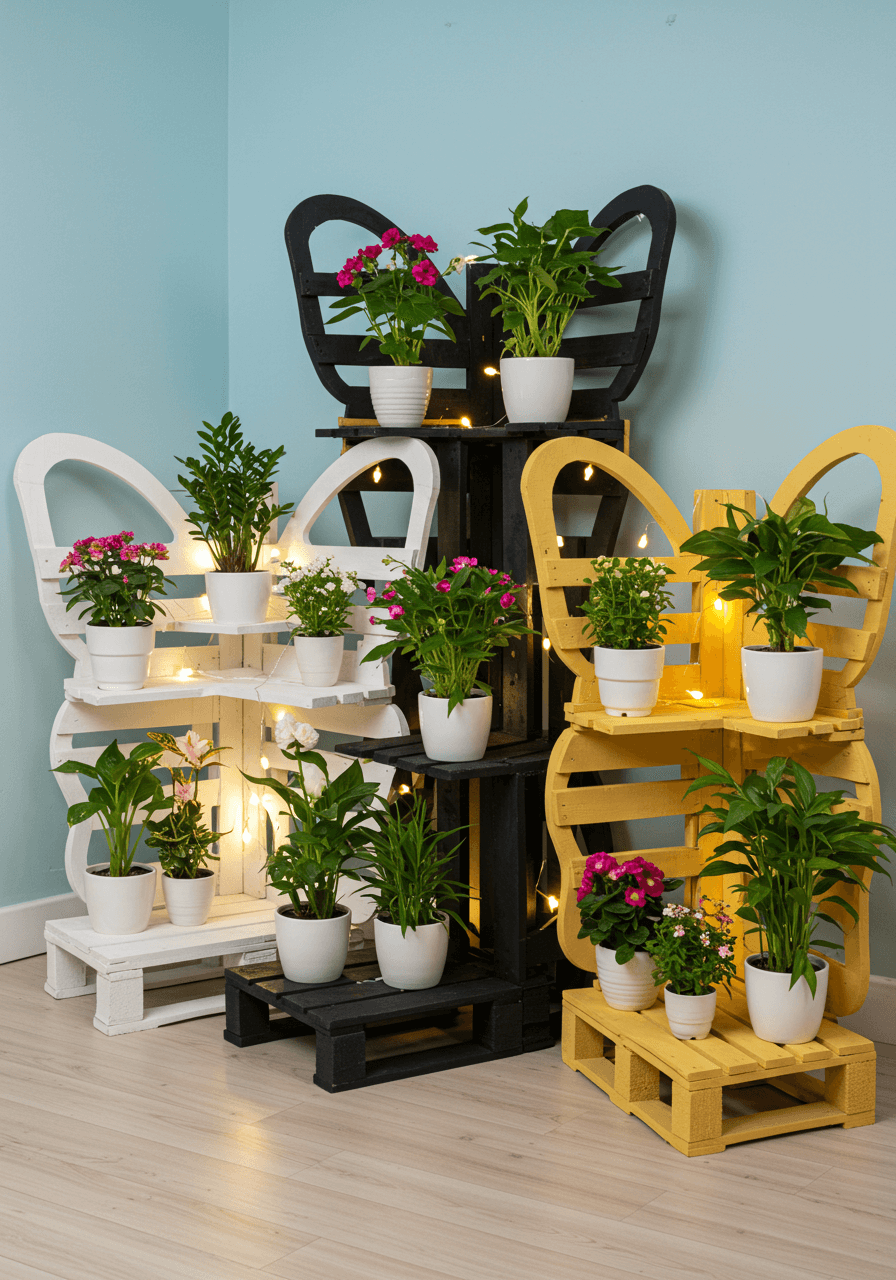
The versatility of wood pallet planters is perhaps one of their greatest strengths. They can be designed and built in a myriad of ways to suit almost any style or function. For outdoor spaces, wood pallet planters can range from simple, single-box structures to elaborate multi-tiered garden displays. Imagine a sprawling garden where planters of varying sizes and shapes create a mosaic of green, interspersed with colorful blooms and vibrant herbs. These planters can be arranged along garden paths, used to form garden walls, or even suspended from fences to create vertical gardens. Each design option opens up new opportunities for creative expression and functional gardening.
For indoor decor, the adaptability of wood pallet planters shines just as brightly. They can be scaled down or modified to suit apartment living, where space is at a premium. Compact planters made from pallets can be used to display small succulents, herbs, or flowering plants on a kitchen windowsill or as part of a living room’s accent decor. Their rustic look contrasts beautifully with modern furnishings, offering a blend of old-world charm and contemporary design. Whether you are aiming for a farmhouse vibe, a boho-chic style, or even a minimalist aesthetic, wood pallet planters can be tailored to match the vision you have for your home.
In addition to their aesthetic appeal and sustainability benefits, wood pallet planters offer a rewarding building experience. The process of dismantling, cleaning, sanding, and reassembling a pallet into a new piece of functional art can be both therapeutic and creatively fulfilling. Many DIY enthusiasts find that working with reclaimed wood offers a unique connection to the material and a deeper appreciation for craftsmanship. The hands-on nature of these projects not only results in a beautiful finished product but also imparts valuable skills in woodworking, design, and problem-solving. For those who love to tinker, experiment, and create, the journey from a discarded pallet to a stunning planter is as enjoyable as it is transformative.
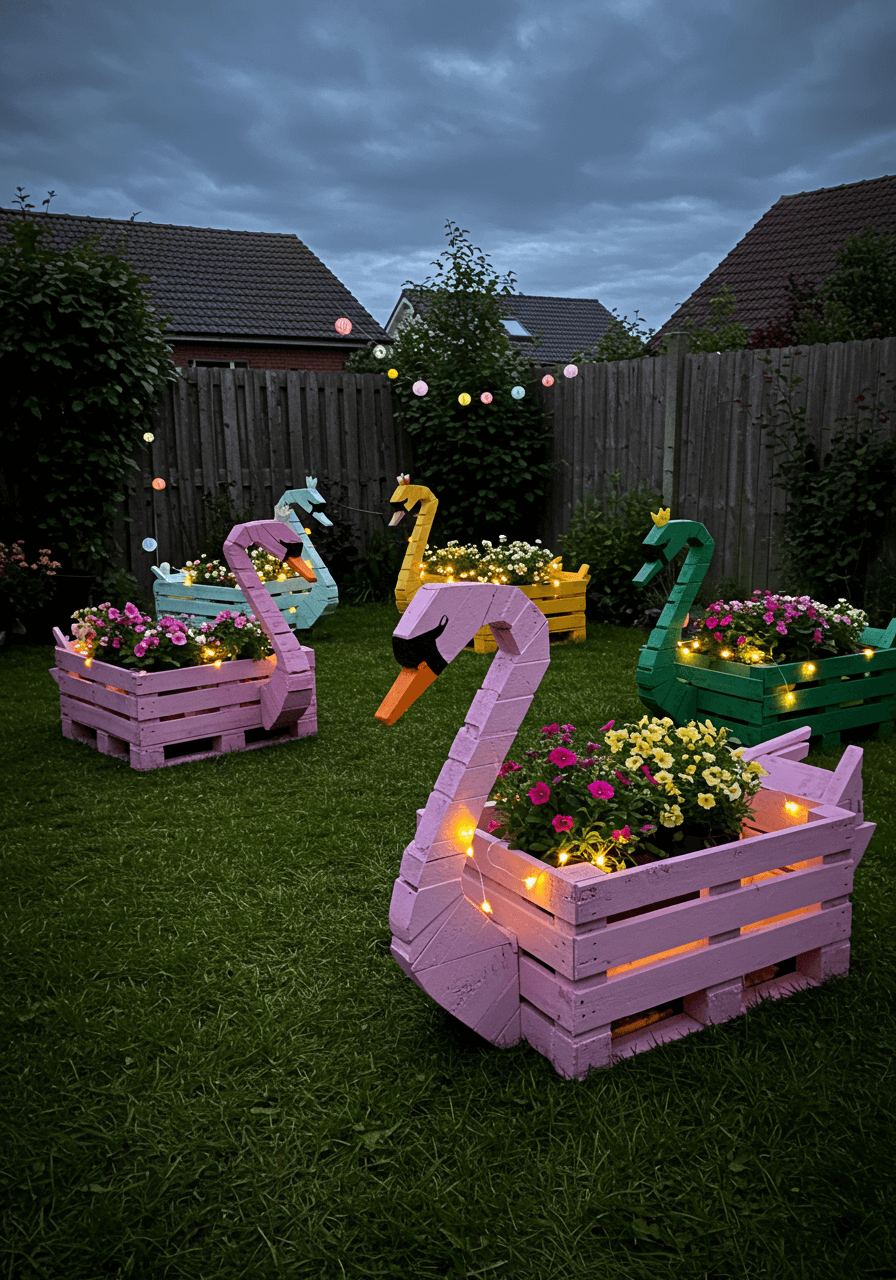

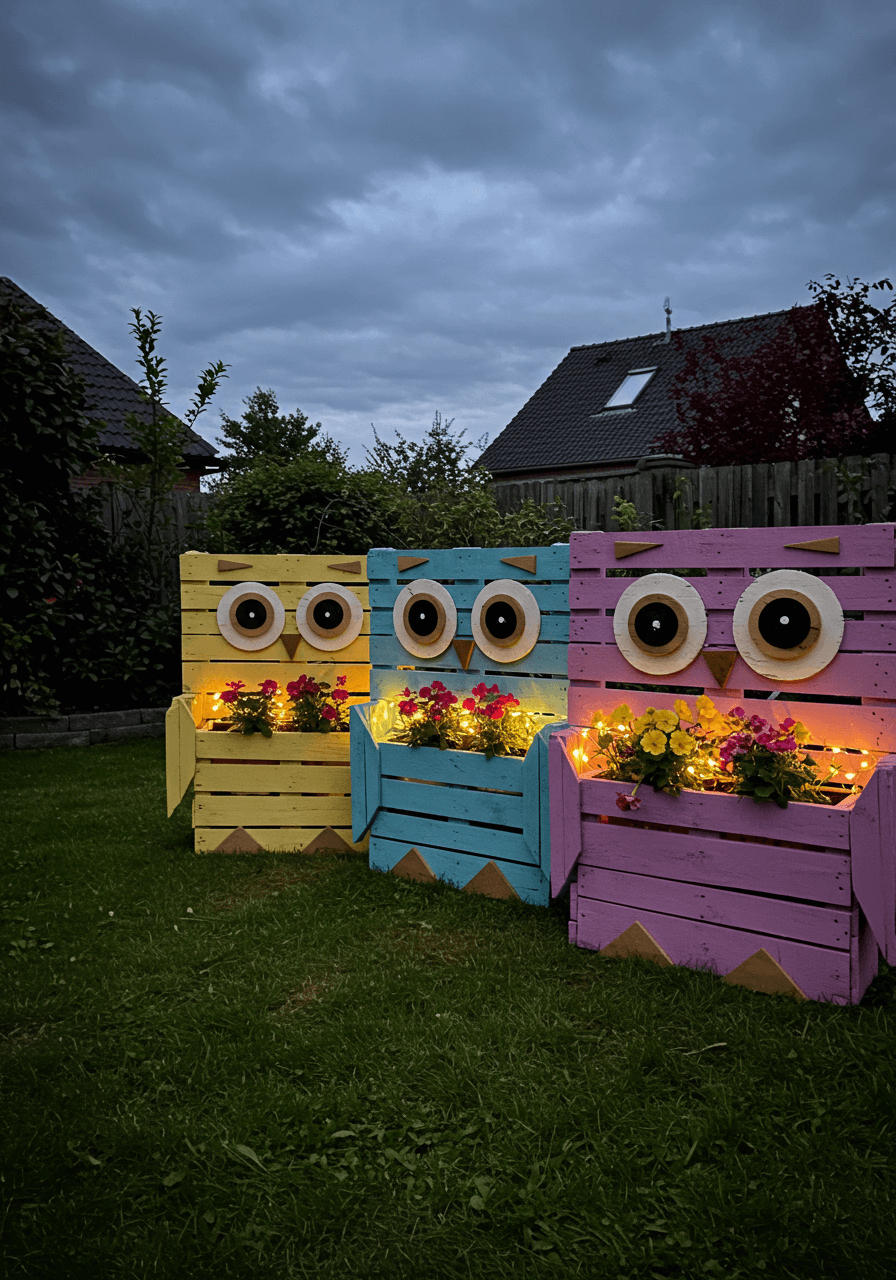
Designing wood pallet planters for the ultimate garden and indoor decor requires some planning and imagination. The first step in the creative process is to consider the location where the planter will be placed. For outdoor gardens, factors such as sunlight, soil conditions, and surrounding decor should be taken into account. A planter that works well in a sunny herb garden might need different design considerations than one intended for a shaded flower bed. Similarly, when planning for indoor decor, think about the room’s lighting, the color palette, and the overall theme. A well-placed wood pallet planter can serve as a focal point in a living room or a charming accent in a hallway.
Once you’ve determined the location, it’s time to sketch out your ideas. Start by drawing rough diagrams of different planter designs. Consider whether you want a freestanding unit, a wall-mounted planter, or a multi-tiered structure that can house a variety of plants. Each design option comes with its own set of benefits. Freestanding planters offer flexibility in placement and can be moved around easily, while wall-mounted options maximize floor space and can create stunning green walls indoors. Multi-tiered planters, on the other hand, can provide a dynamic visual impact with layers of greenery, offering a vertical dimension to your garden or indoor space.
The construction process of wood pallet planters involves several steps that require both creativity and practical know-how. The first step is sourcing the right pallets. Look for pallets that are in good condition—sturdy, with minimal signs of decay or damage. It’s important to choose pallets that have been treated naturally or are heat-treated rather than chemically treated, as you want to ensure that the finished planters are safe for both plants and people. Once you have your pallets, the next step is to dismantle them carefully. This process can be done using basic hand tools like crowbars, hammers, and saws. As you take the pallet apart, set aside the best pieces of wood for the visible parts of the planter, and consider how you might reuse or repurpose the remaining pieces in creative ways.
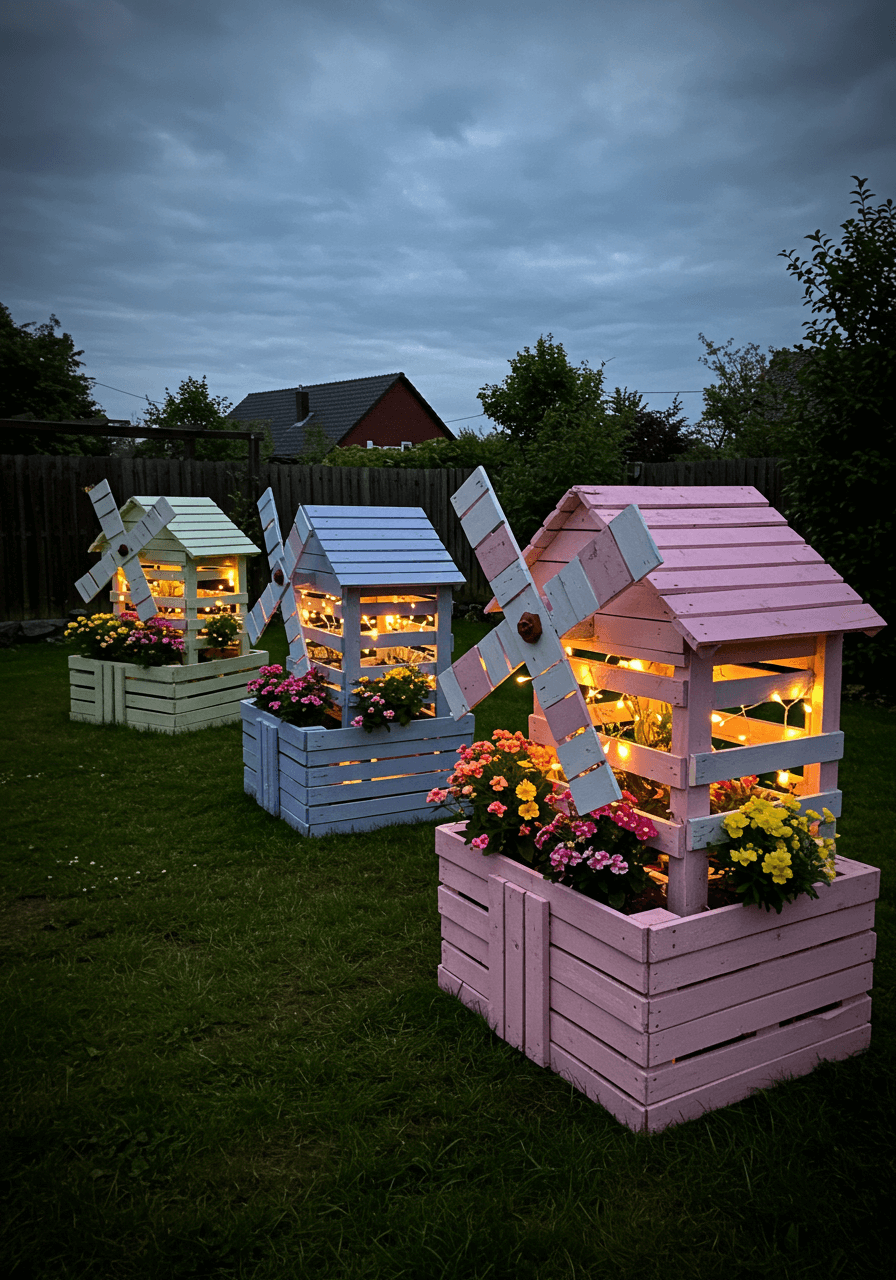

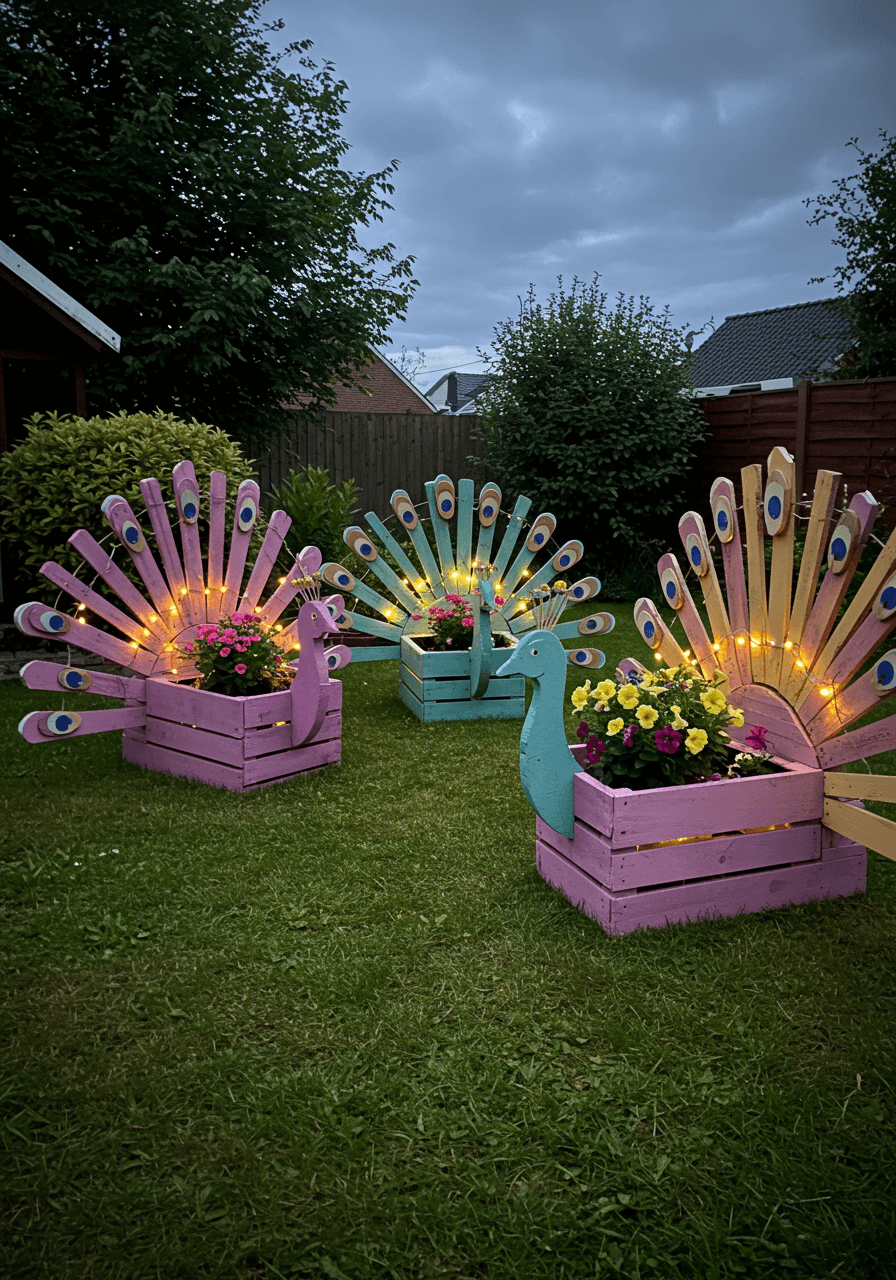
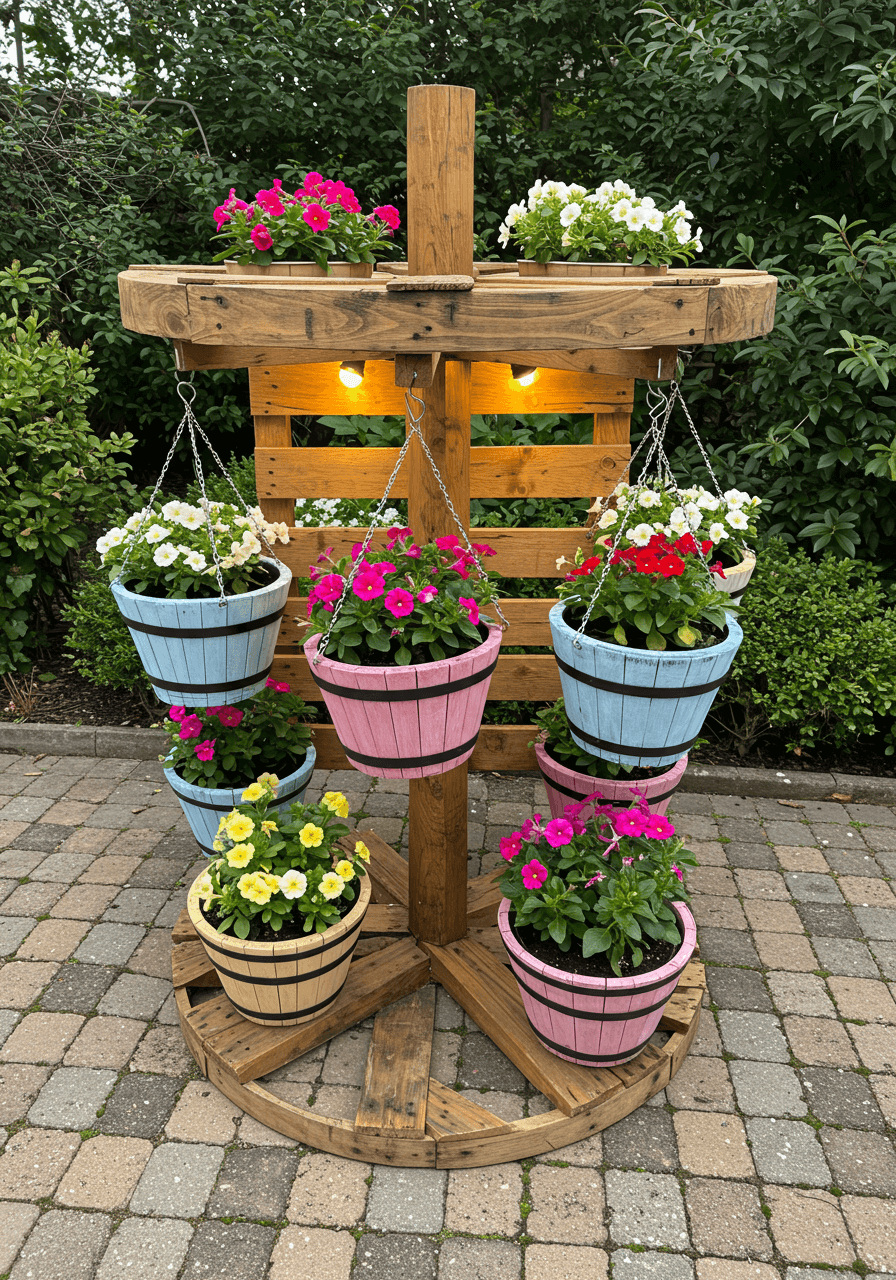
After dismantling the pallet, the wood should be cleaned and sanded thoroughly. Sanding not only smooths out rough surfaces and eliminates splinters but also prepares the wood for painting or staining. The finishing process is crucial for both aesthetics and durability. A good finish protects the wood from moisture and decay, extending the lifespan of your planter, whether it is displayed indoors or outdoors. When choosing finishes, opt for eco-friendly, non-toxic paints or sealants that are safe for both plants and humans. This ensures that your planter will not only look beautiful but will also be a healthy environment for your plants to thrive.
Once the wood is prepped, you can begin assembling your planter. Depending on your design, this might involve constructing a simple box, a series of shelves, or a more complex multi-tiered structure. Throughout the construction process, precision is key. Measuring twice and cutting once is a rule that applies in woodworking as much as it does in any other craft. Ensuring that all pieces fit together snugly will prevent gaps and ensure structural stability. The use of screws, nails, or wood glue can help reinforce joints, and adding extra bracing in critical areas will provide additional strength. For those who are new to woodworking, there are plenty of online tutorials and community workshops that can offer guidance and tips for successful construction.
As your wood pallet planter begins to take shape, think about incorporating unique design elements that set it apart. For outdoor planters, consider adding elements that complement your garden’s natural beauty—this might include decorative metal accents, wrought iron details, or even hand-painted designs that reflect local flora and fauna. For indoor planters, think about how the piece will integrate with your existing decor. A planter that doubles as a shelf or a side table can be both functional and visually appealing. Some creative ideas include incorporating built-in LED lighting to highlight the plants at night or adding glass insets to create a modern, elegant look. The beauty of wood pallet planters is that they can be as simple or as elaborate as you desire, providing endless opportunities for customization.
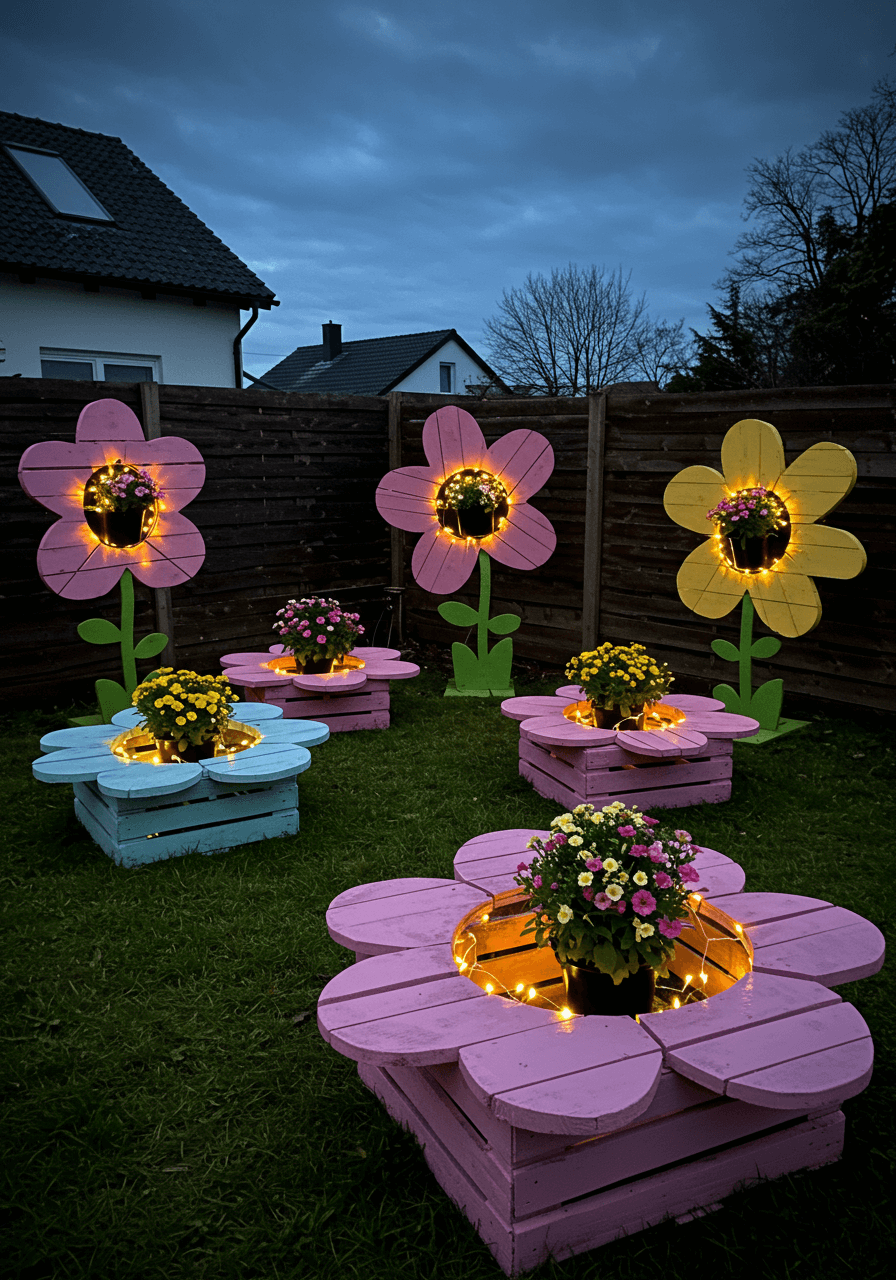
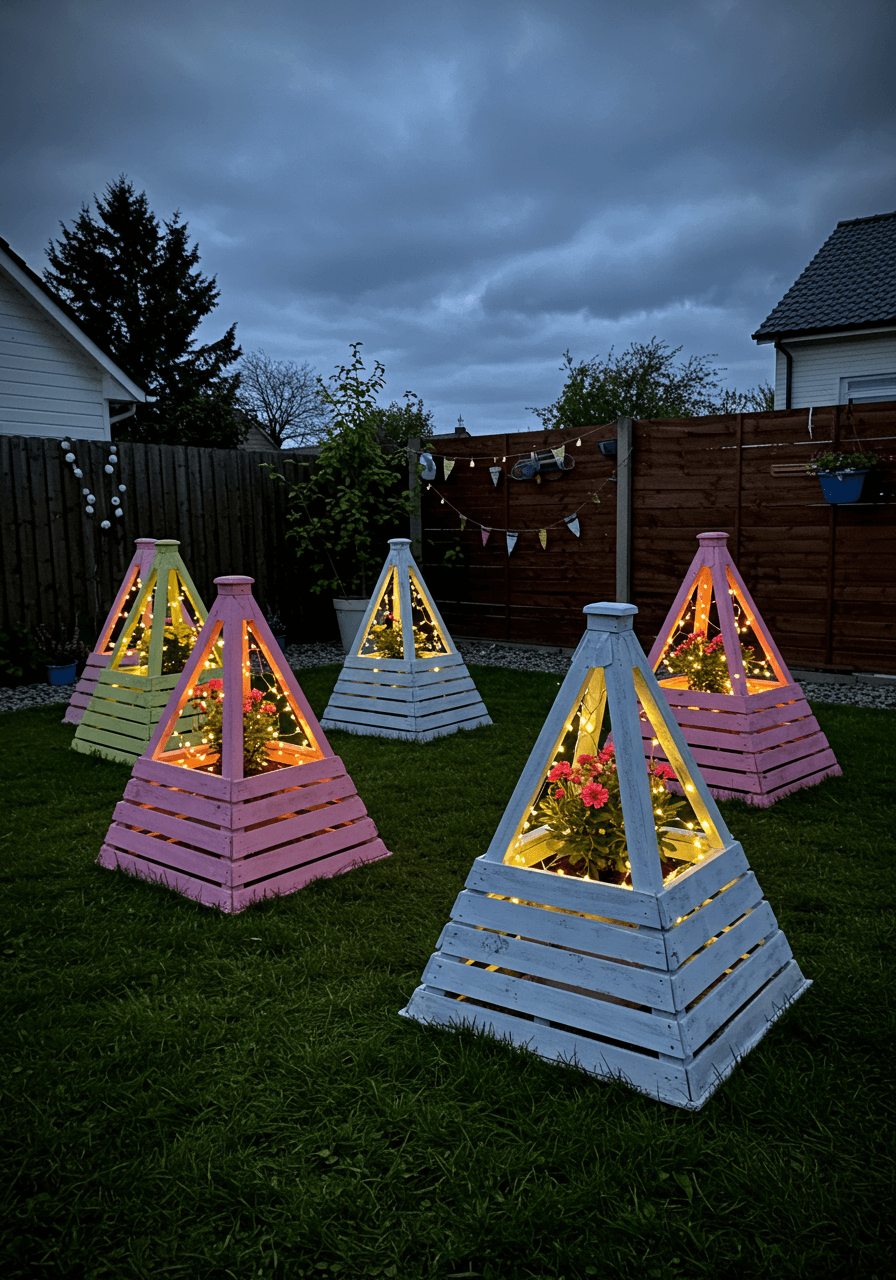


The versatility of wood pallet planters also extends to the types of plants you choose to grow. Outdoor planters are perfect for a wide range of flora—from hardy succulents and aromatic herbs to vibrant annuals and perennials. Creating a mosaic of different plant types can transform your garden into a living piece of art. For indoor settings, planters can be used to display low-maintenance plants such as ferns, small flowering species, or even trendy succulents that add a pop of color and texture to your living space. Combining different types of plants in one planter not only creates visual interest but can also lead to a healthier microenvironment, as some plants naturally help to purify the air.
When integrating wood pallet planters into your garden, consider their placement and how they interact with other elements of your outdoor space. A row of planters along a garden path can serve as a border that enhances the flow of the landscape, while larger, standalone planters can become focal points that draw the eye. Similarly, for indoor decor, think about grouping planters in clusters to create a mini indoor garden. Placing planters on different levels—such as on the floor, on shelves, or hanging from walls—can create a dynamic visual display that adds depth and dimension to a room. The key is to balance functionality with aesthetic appeal, ensuring that each planter not only serves its purpose but also contributes to the overall ambiance of the space.

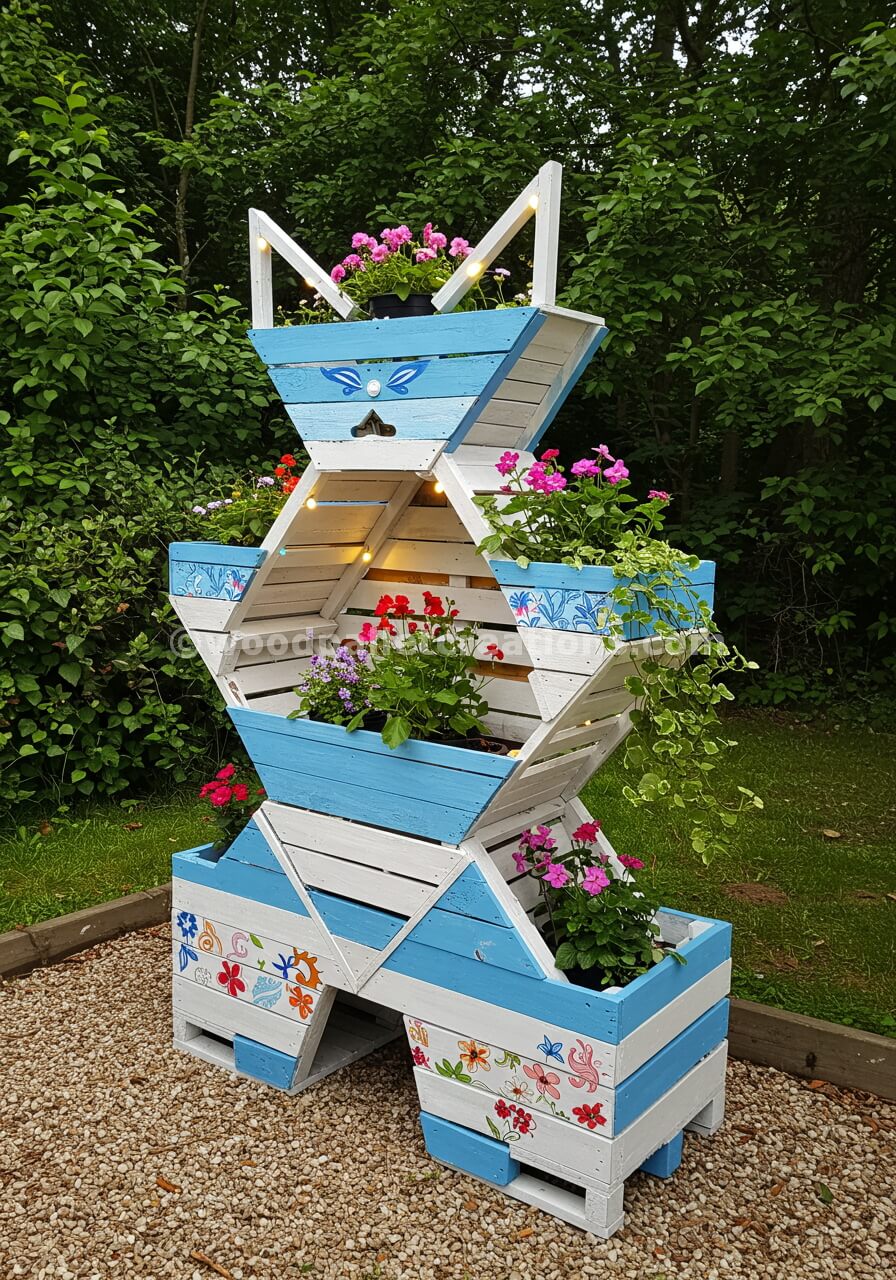

Maintenance of wood pallet planters is an important consideration to keep in mind. Outdoor planters, especially, are subject to the elements—rain, sun, and temperature fluctuations can all impact the wood over time. Regular maintenance, such as reapplying sealant or paint, checking for structural integrity, and ensuring that drainage is functioning properly, will extend the life of your planters. Indoors, while the conditions are generally more controlled, periodic dusting and cleaning can keep the wood looking fresh and vibrant. Teaching family members or even kids about the care and upkeep of these planters can be an educational experience, reinforcing lessons about sustainability, responsibility, and the beauty of natural materials.
The transformation of wood pallets into planters is more than just a DIY project—it is a journey that connects you to the cycle of reuse, creativity, and environmental stewardship. By choosing to work with reclaimed wood, you are making a statement about the importance of sustainable practices and the value of resourcefulness. Each planter becomes a symbol of what can be achieved when we look beyond the surface of discarded materials and see the potential for beauty and function. Whether placed in a sprawling garden or a chic urban apartment, wood pallet planters embody a spirit of innovation and a commitment to living in harmony with the environment.



For those who appreciate the artistry of design, wood pallet planters also provide a canvas for expression. The natural imperfections of reclaimed wood can be celebrated rather than hidden, and the process of working with such material often reveals hidden textures and patterns that add depth to the finished product. These planters tell a story—a story of transformation, resilience, and the enduring beauty of nature. In a world where mass-produced items often lack character, the individuality of each wood pallet planter offers a refreshing alternative. No two planters will ever be exactly alike, making each one a unique piece of decor that can be cherished for years to come.
Incorporating wood pallet planters into your home and garden is also a wonderful way to support a lifestyle that values quality over quantity. In an era where consumerism often leads to waste, investing time and effort into creating something with your own hands fosters a sense of pride and accomplishment. This approach to decor is not only more sustainable but also more personal. The satisfaction of knowing that you built something meaningful from reclaimed materials can enhance your appreciation for both the product and the process. It encourages a slower, more mindful pace of living where creativity and environmental awareness go hand in hand.

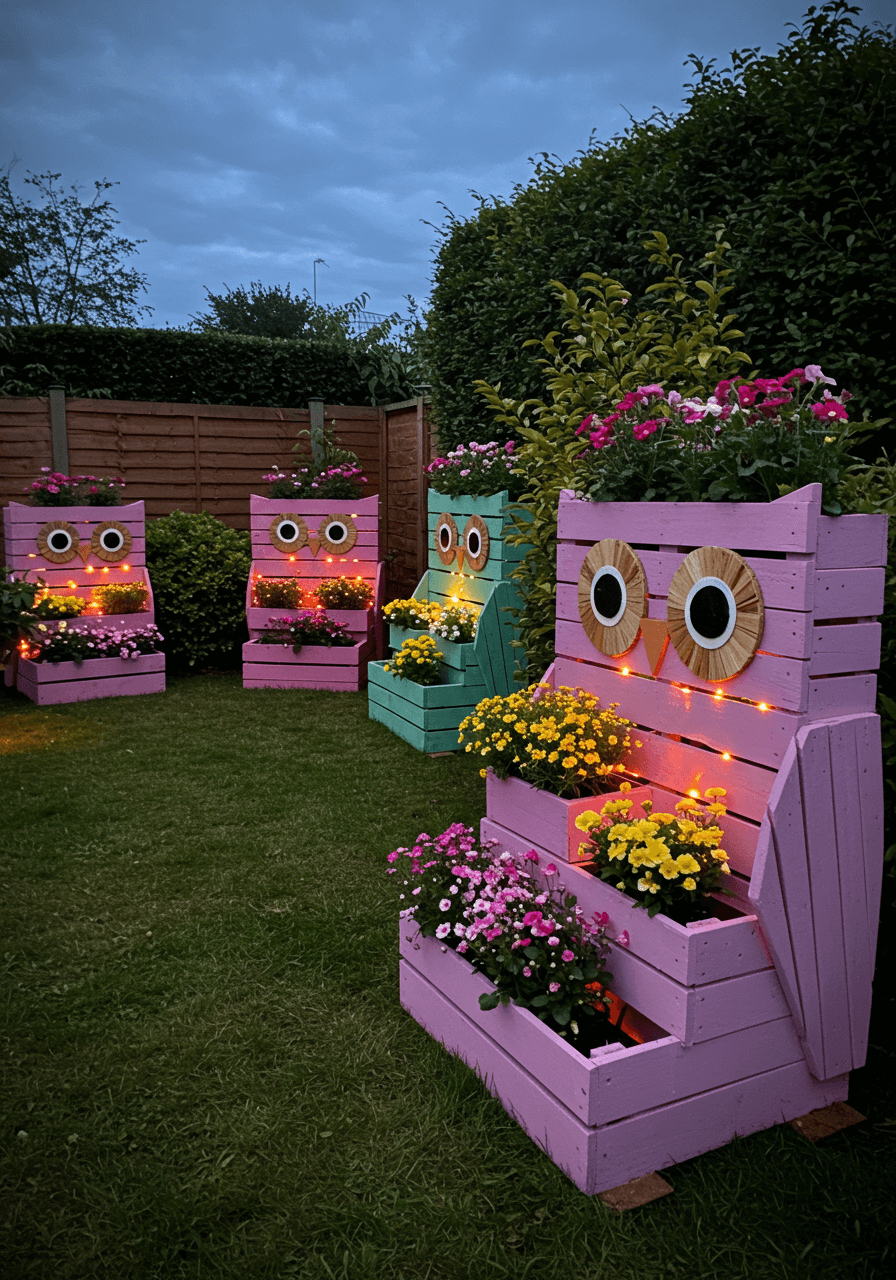
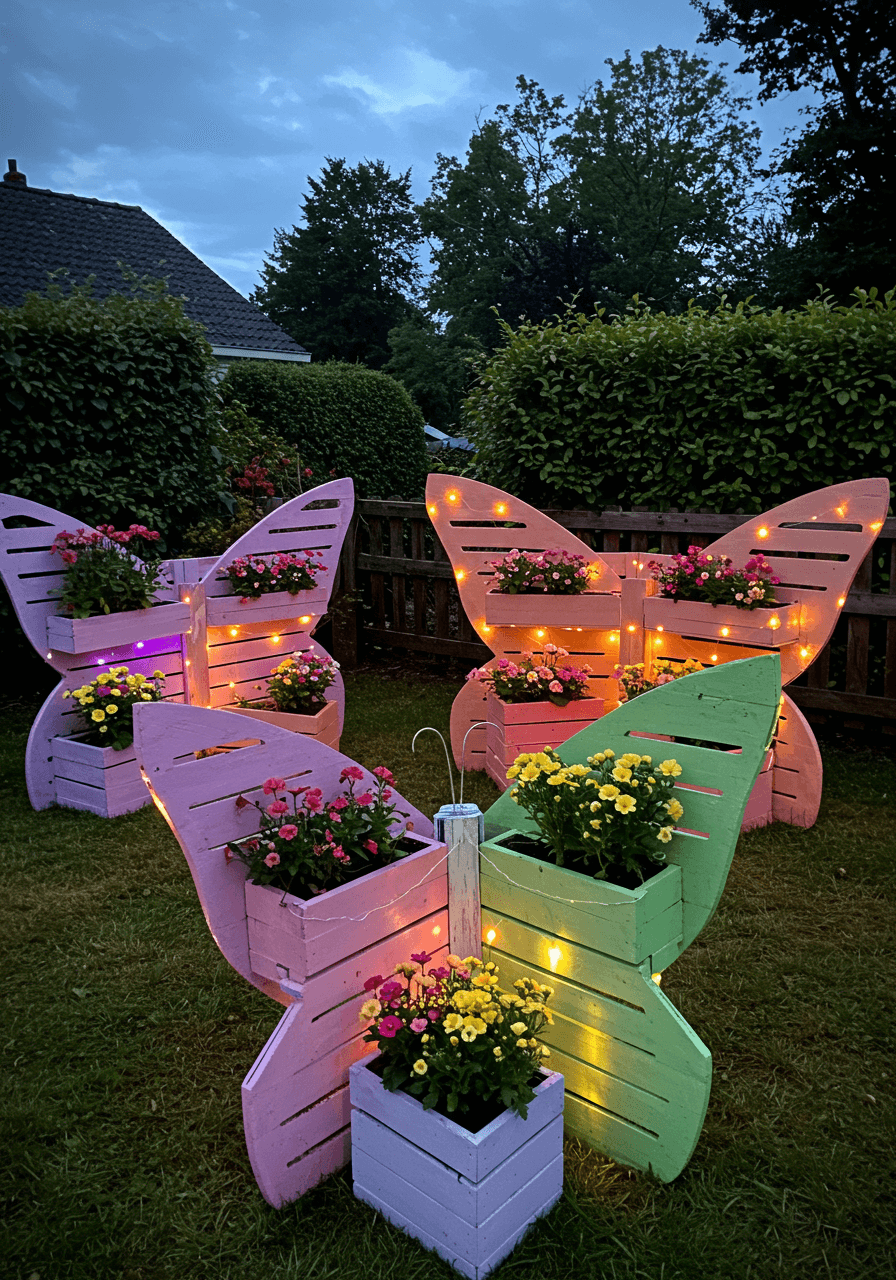
Moreover, wood pallet planters can serve as a conversation starter, inviting guests to learn more about your creative process and the principles behind sustainable design. Whether in a backyard garden party or a casual indoor gathering, these planters can spark discussions about the importance of reusing materials, the benefits of eco-friendly practices, and the joy of DIY projects. They become more than just decorative objects; they are tangible examples of how a commitment to sustainability can be both beautiful and practical. In sharing your experience and the story behind your planters, you inspire others to consider how they might repurpose everyday items into works of art.
Another aspect worth exploring is the integration of technology and modern design into wood pallet planters. While the core material is rustic and reclaimed, there is a growing trend of combining traditional woodworking techniques with contemporary elements. For instance, you might incorporate solar-powered LED lights into your outdoor planters to create an enchanting nighttime display. Or consider embedding small, weather-resistant speakers that play soft ambient music, transforming your garden into a multisensory experience. Indoors, you can experiment with minimalist designs that highlight the contrast between raw wood and sleek, modern accessories. These integrations not only broaden the appeal of wood pallet planters but also demonstrate that sustainability and modernity can coexist harmoniously.

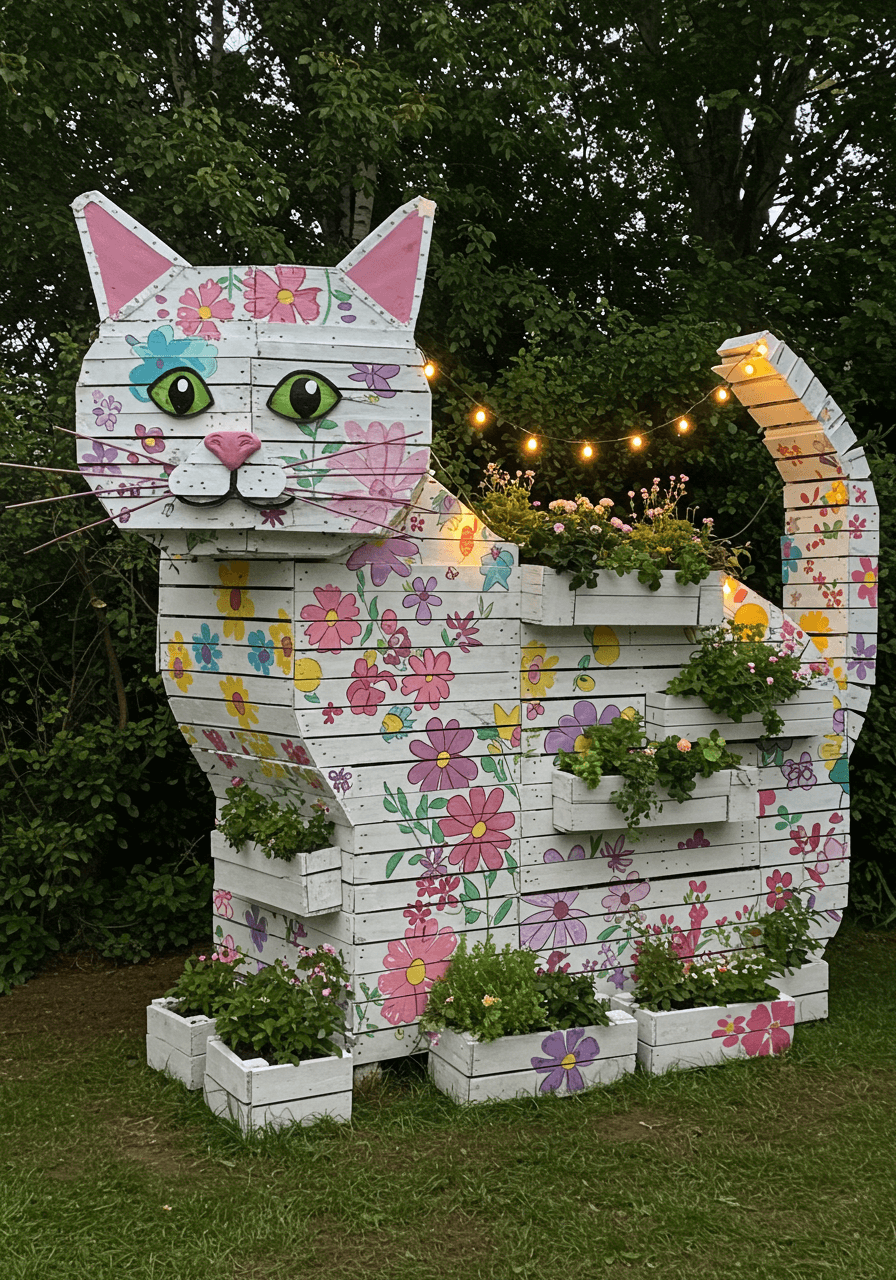
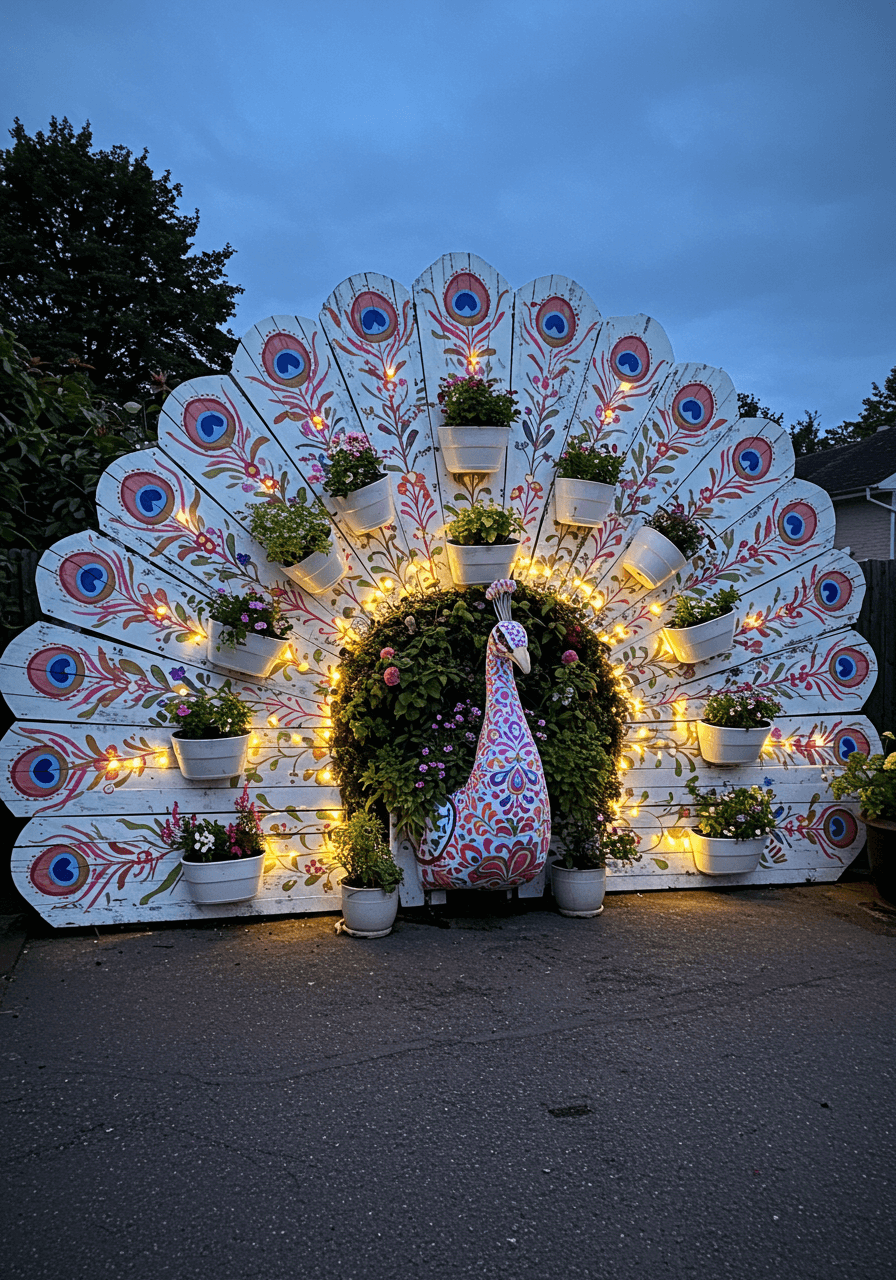
As you continue to experiment with wood pallet planters, consider expanding your projects to include a variety of styles and scales. For example, you might design a series of planters that vary in size to create a layered, gallery-like display on a wall or fence. Alternately, you could develop a modular system where individual planters connect to form a larger, cohesive structure that can be rearranged to suit different occasions or seasonal changes. The modularity of wood pallet planters makes them an excellent choice for creative minds who are not afraid to break traditional design rules. Every project is an opportunity to innovate and redefine what it means to incorporate natural elements into everyday living.
Ultimately, the journey of transforming wood pallets into planters is a testament to human ingenuity and the power of creative reuse. It reminds us that beauty can be found in unexpected places and that the materials we often overlook hold the potential for great transformation. By embracing this approach, you contribute not only to a more sustainable environment but also to a lifestyle that values art, creativity, and thoughtful design. Each planter becomes a symbol of possibility—a reminder that with imagination and determination, even the simplest items can be reborn into objects of beauty and purpose.
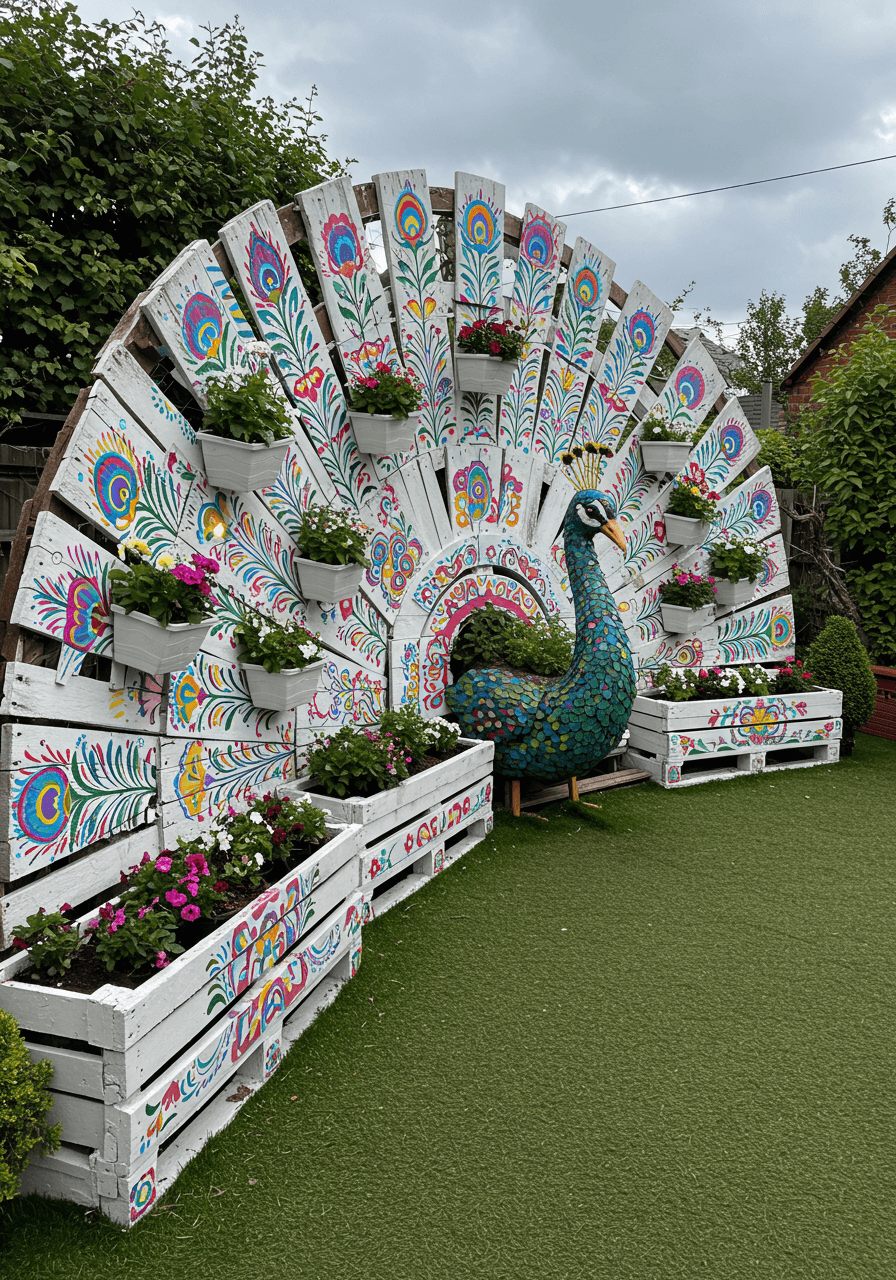

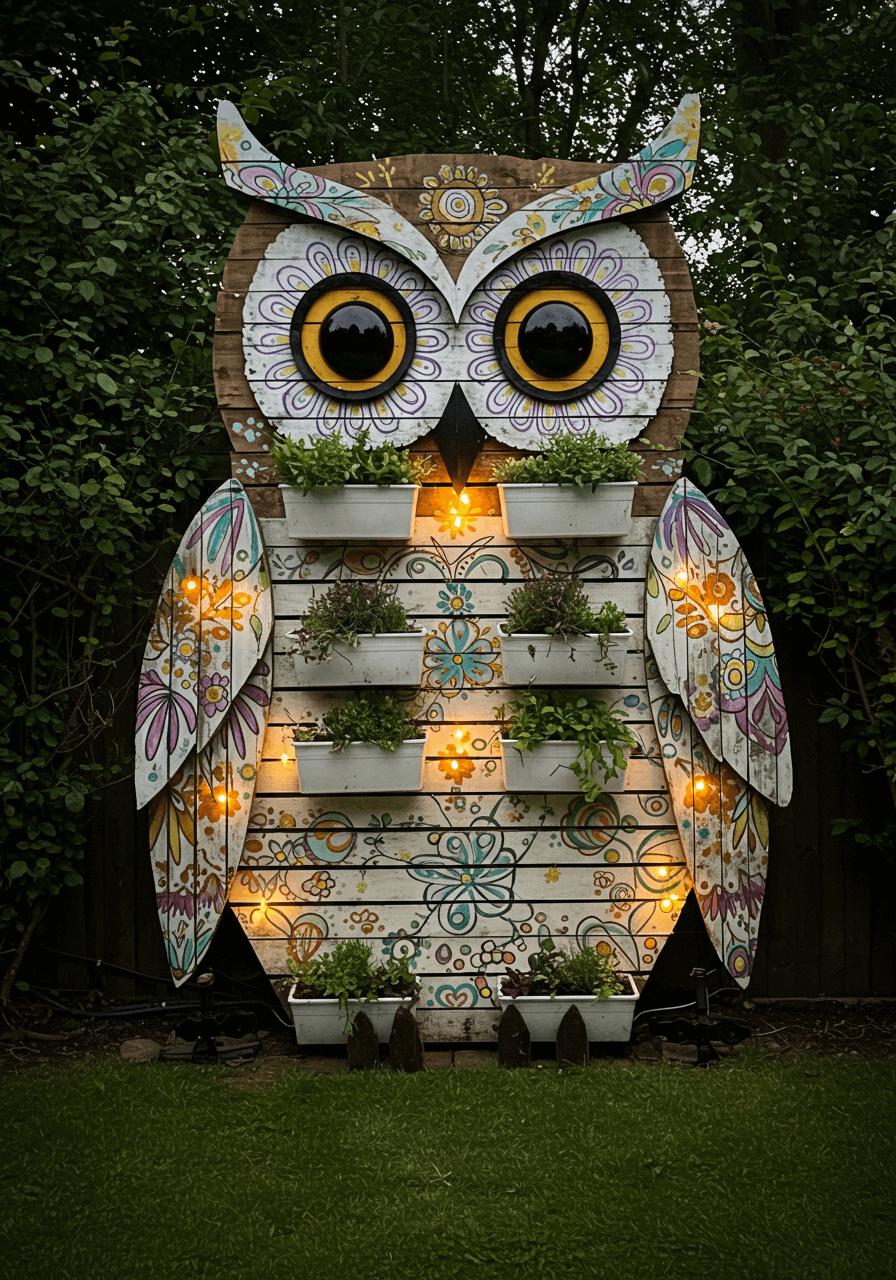
Wood pallet planters offer an unmatched blend of sustainability, affordability, and artistic expression that can elevate both garden spaces and indoor decor. They serve as a practical and visually appealing solution for those looking to cultivate a greener lifestyle while adding a unique touch to their living spaces. Whether you are designing a sprawling garden filled with life or a cozy indoor nook that celebrates natural materials, these planters provide endless opportunities for innovation and personal expression. Their rustic charm, coupled with modern design enhancements, makes them a versatile addition that adapts to any environment.
From the careful selection of quality pallets and the meticulous process of dismantling and sanding to the creative assembly and final decorative touches, every step of crafting wood pallet planters is an exercise in mindful creativity. It is a process that connects you with the material, honors the history embedded in every plank, and redefines waste as a resource of infinite possibility. By choosing to repurpose wood pallets, you are not only creating a stunning piece of decor but also contributing to a larger movement of environmental awareness and sustainable living.
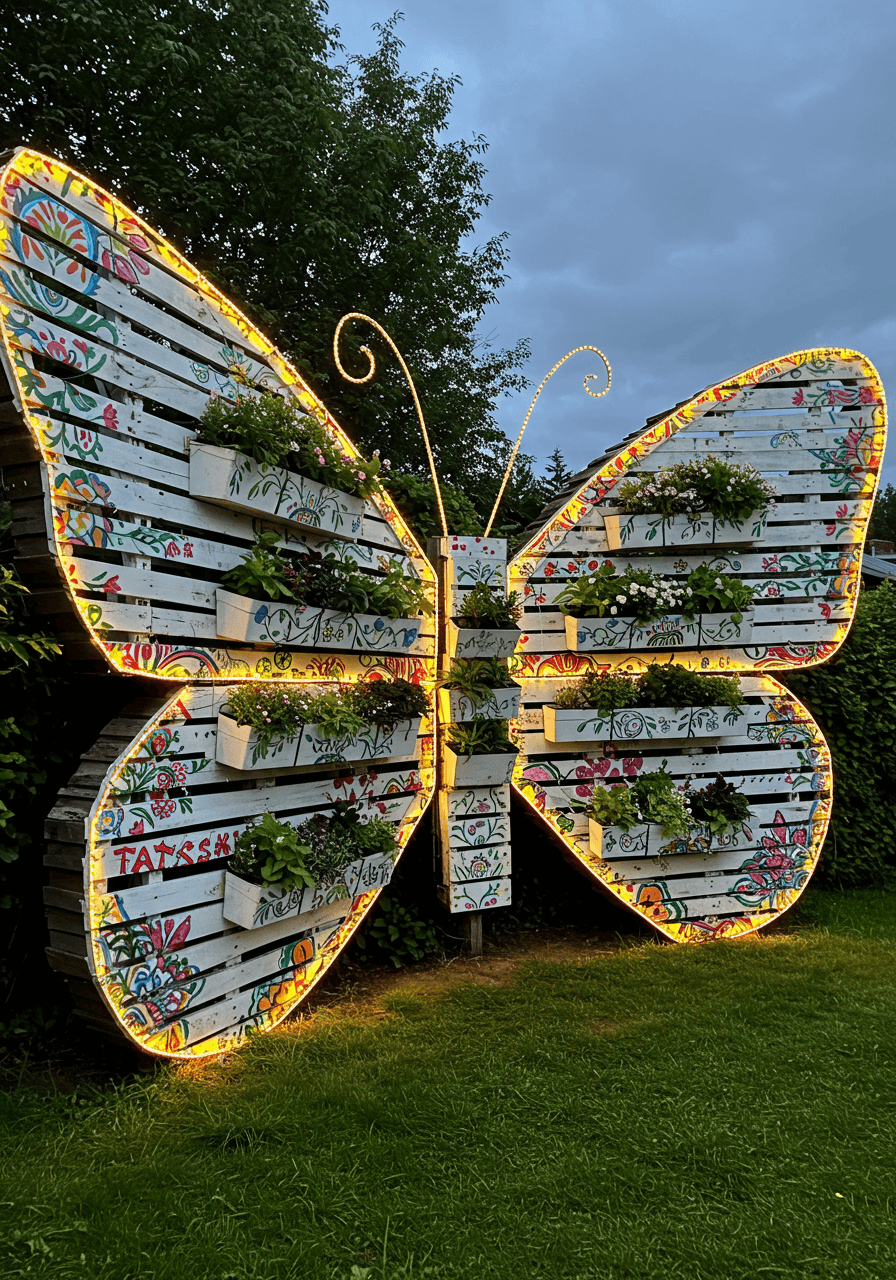
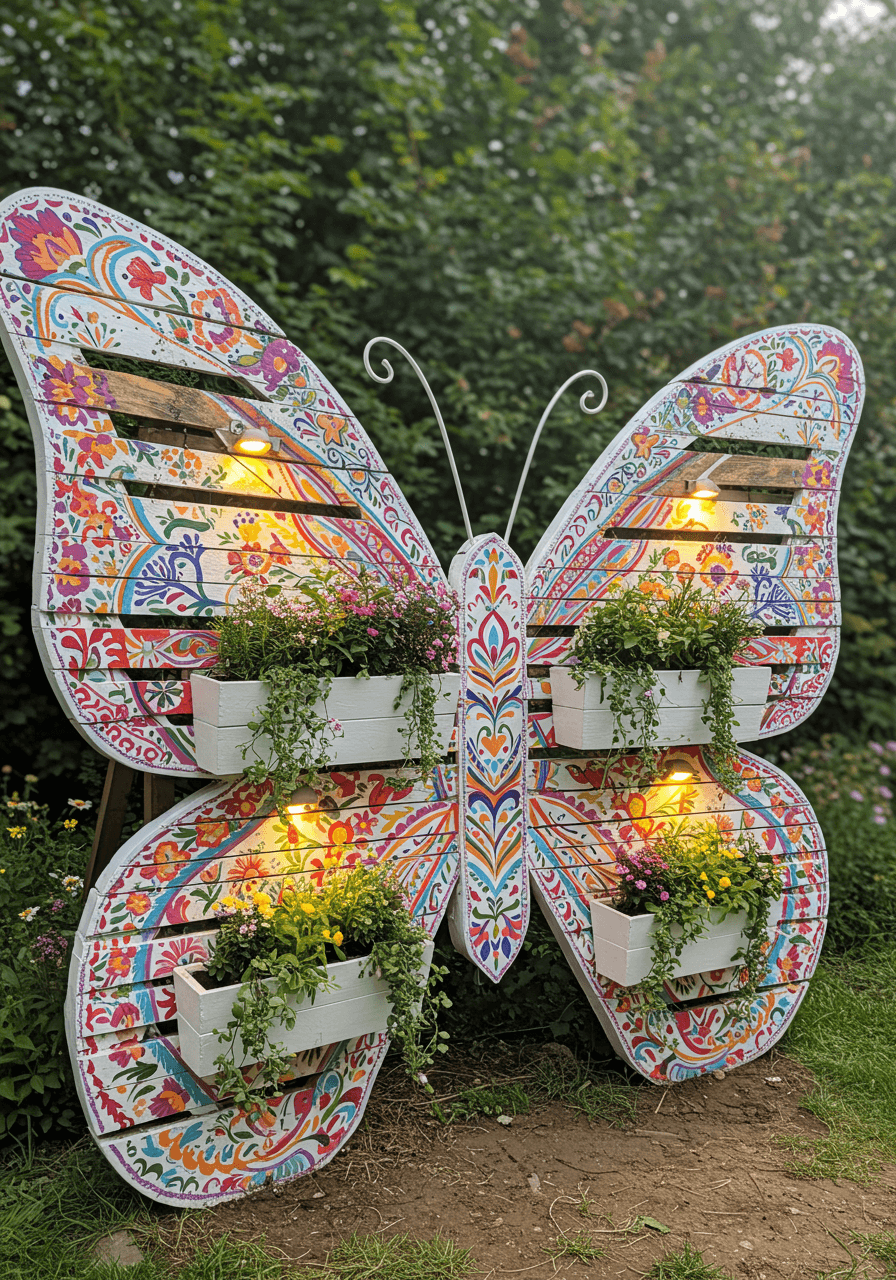
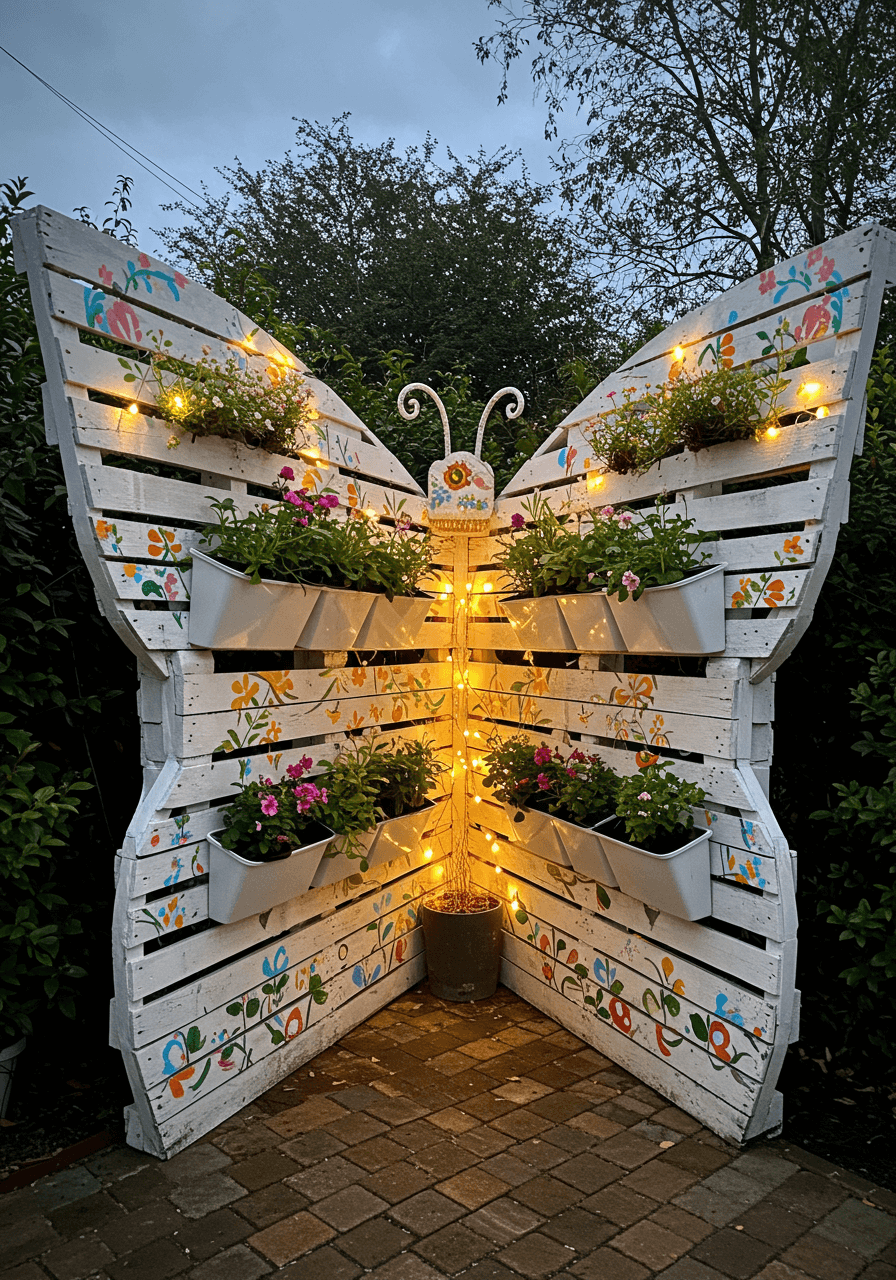
So, whether you are a seasoned DIY veteran or a curious newcomer eager to explore the world of repurposed decor, consider embarking on the adventure of building wood pallet planters. Let them transform your garden into an oasis of greenery and your indoor spaces into reflections of natural beauty and innovation. As you watch your plants flourish in these handcrafted containers, you will be reminded of the incredible potential that lies in every discarded pallet—and in every creative idea waiting to be realized.
Embrace the challenge, enjoy the process, and celebrate the extraordinary results. Wood pallet planters are more than just containers for plants; they are works of art, symbols of sustainability, and expressions of a lifestyle that honors both nature and creativity. With each planter you build, you help pave the way for a future where design and environmental responsibility go hand in hand, creating spaces that are as nurturing for the soul as they are for the environment.
Happy building, happy planting, and may your journey with wood pallet planters bring you endless joy, inspiration, and a renewed connection with the natural world.
